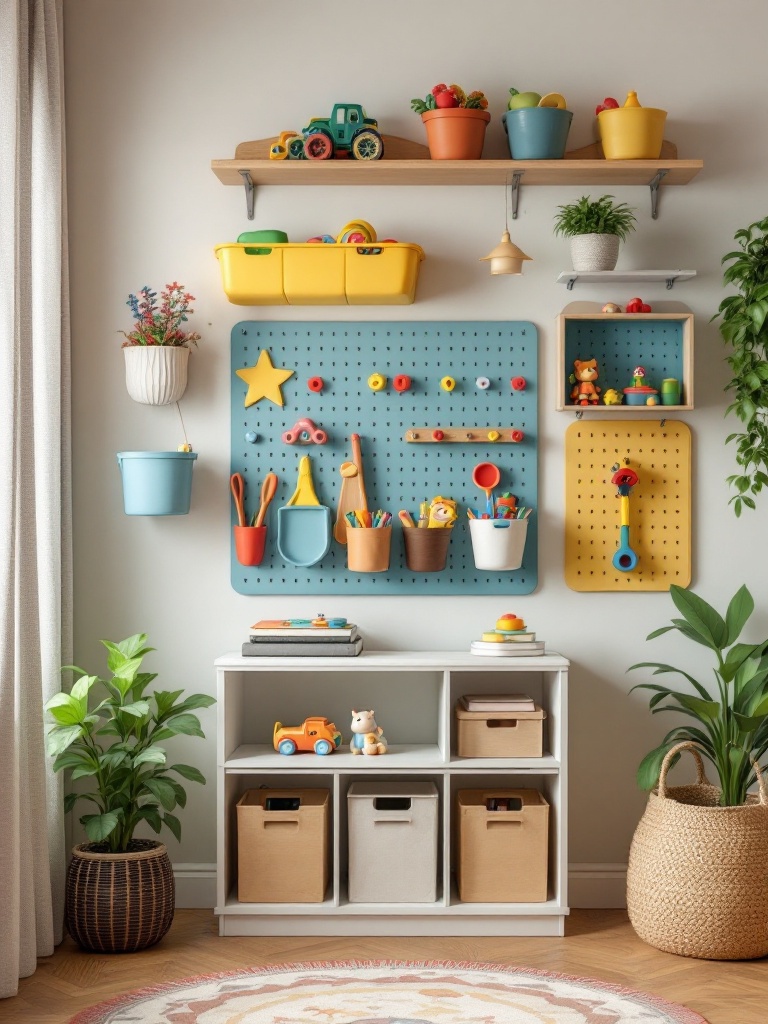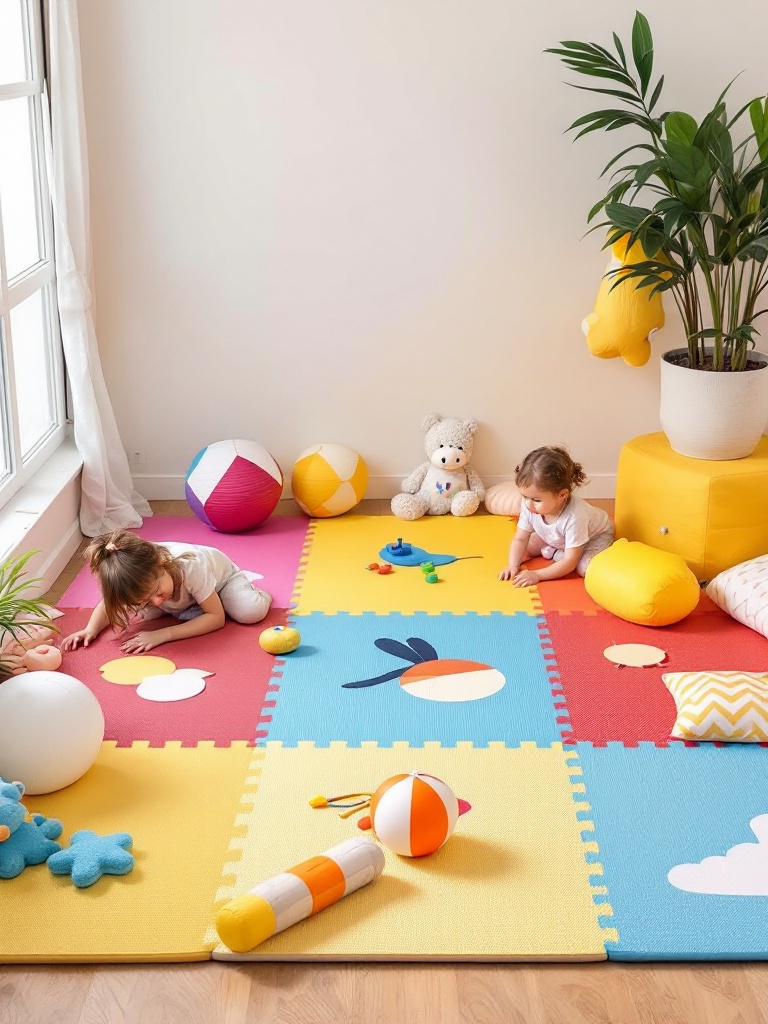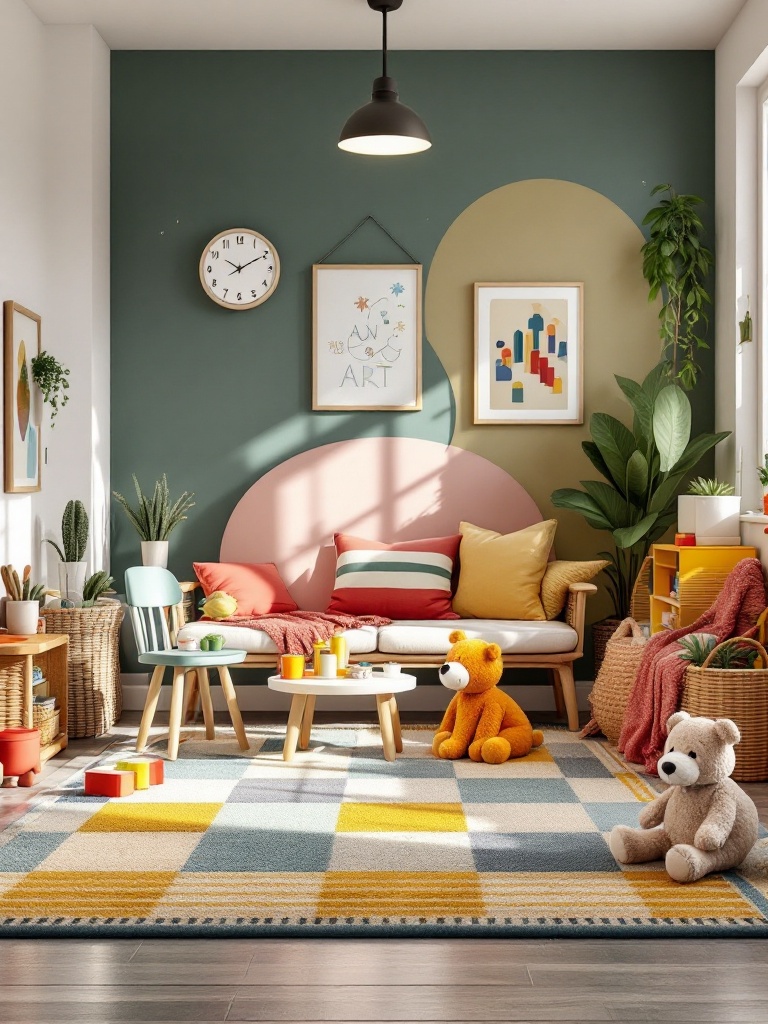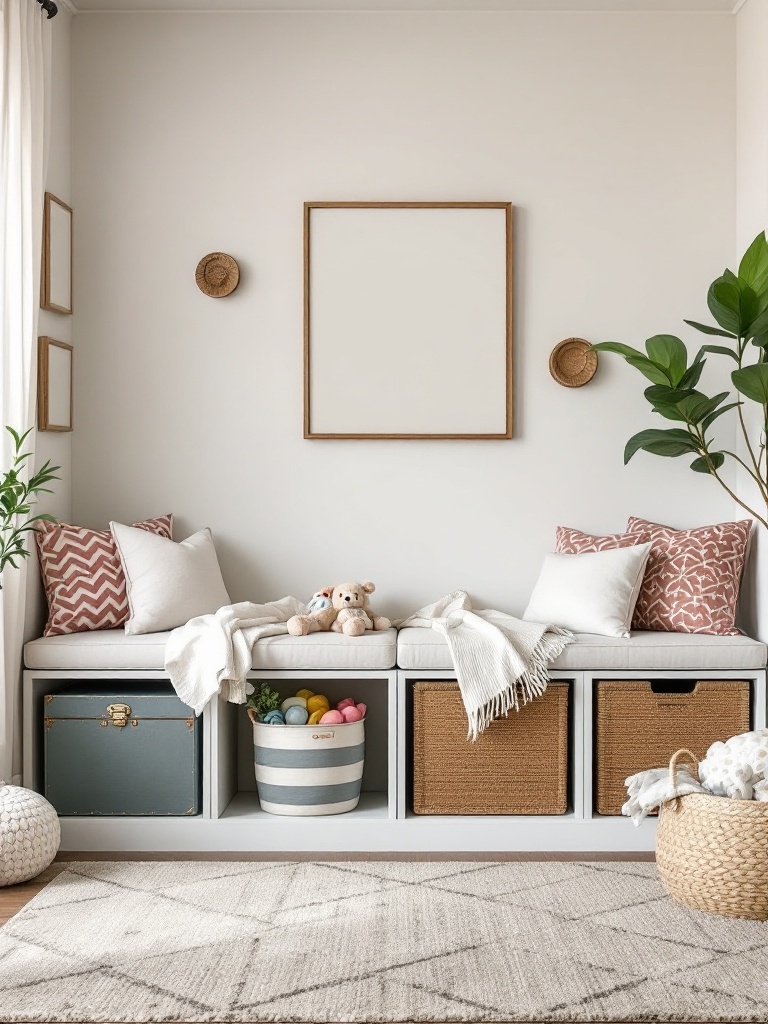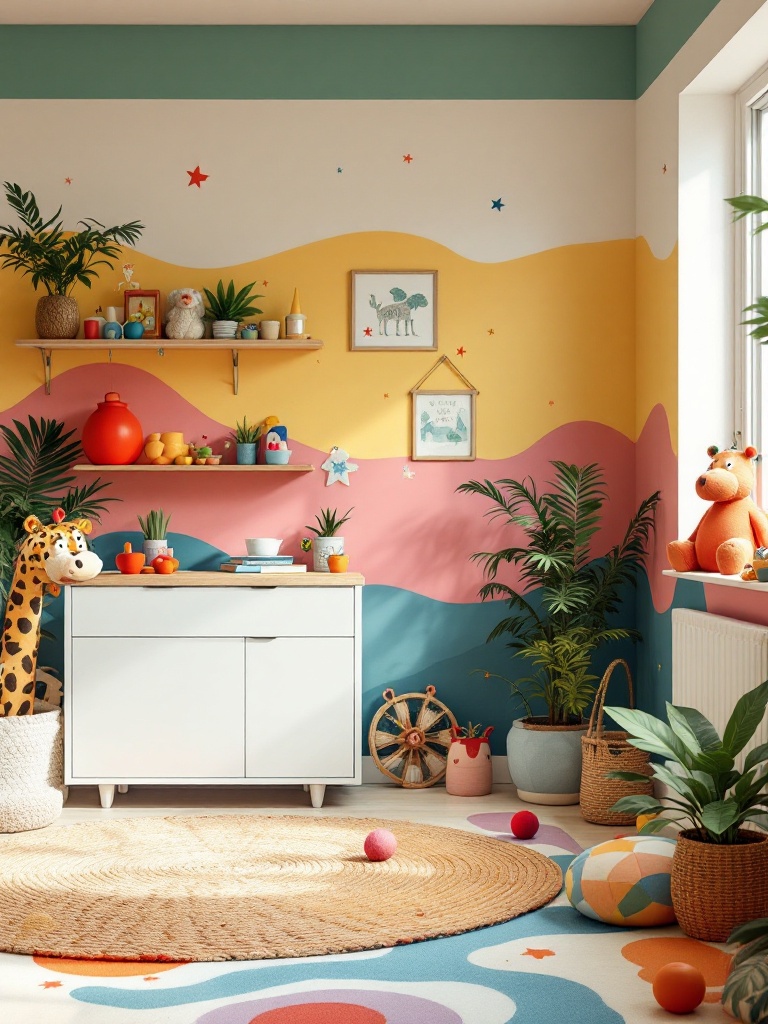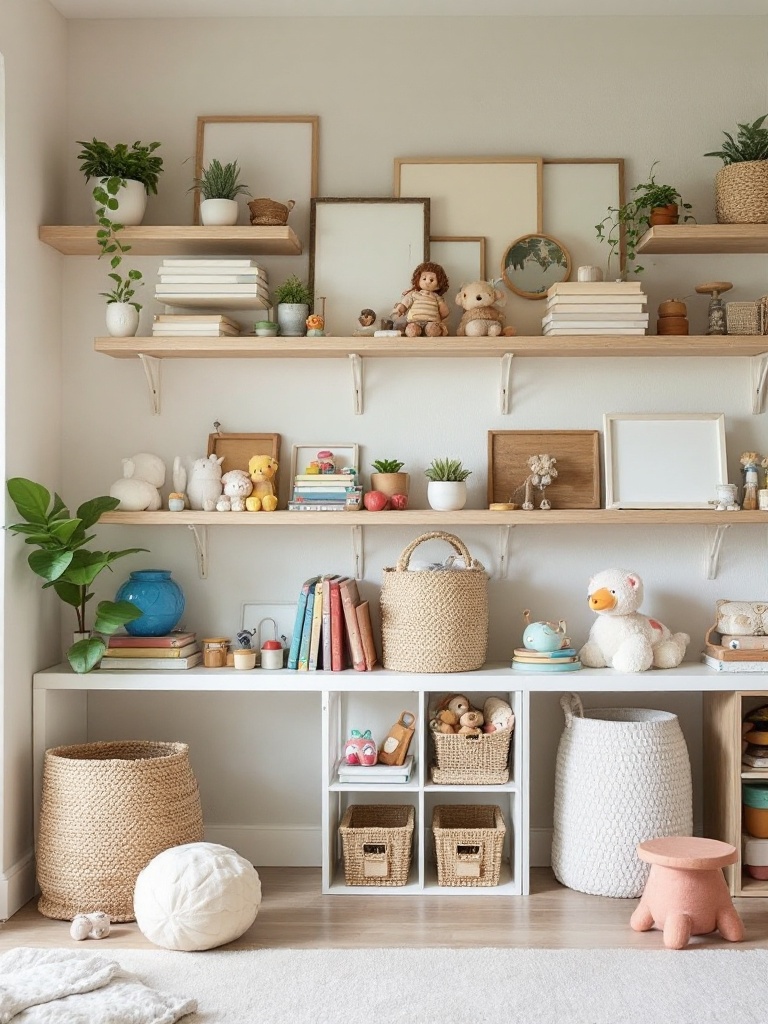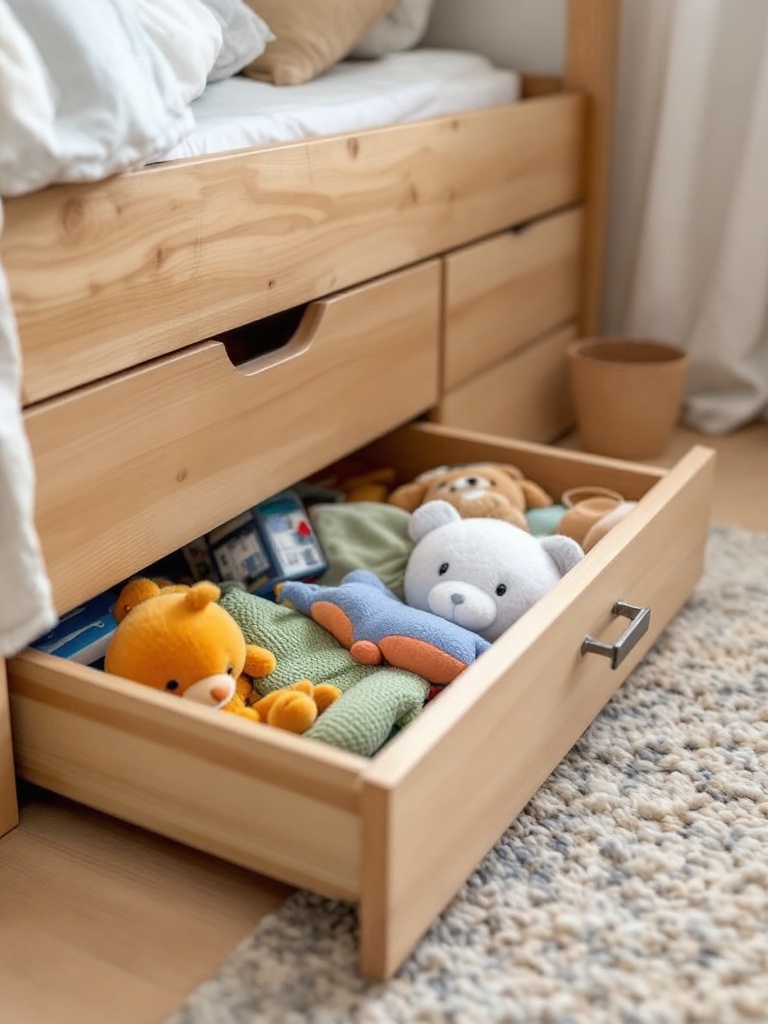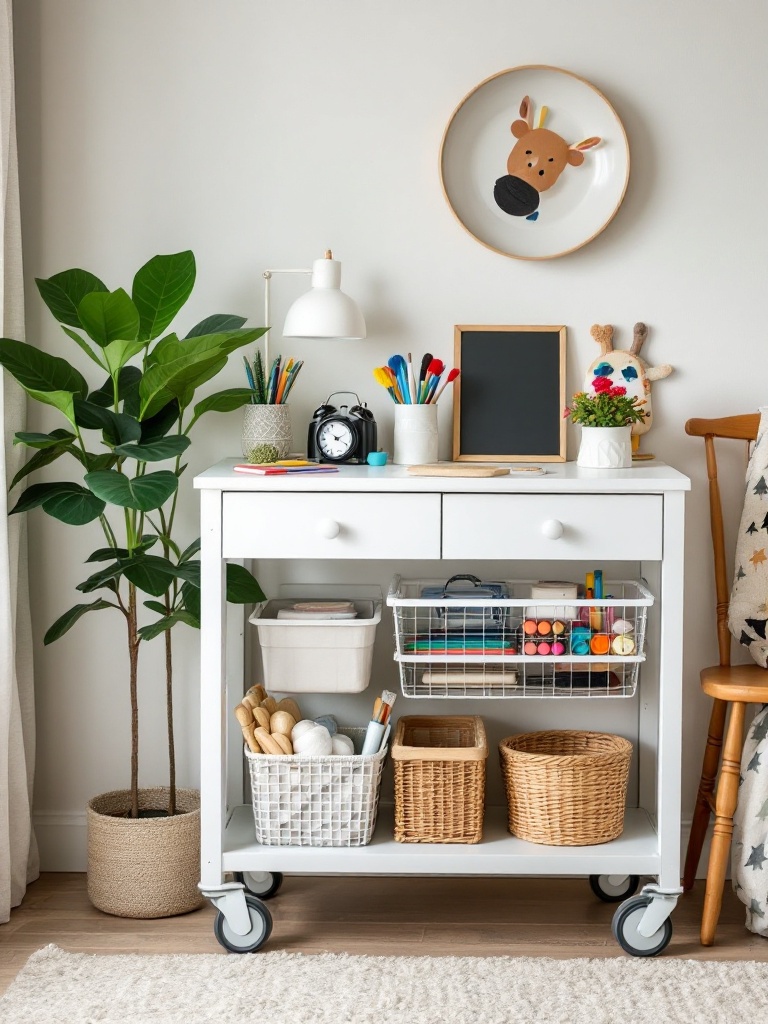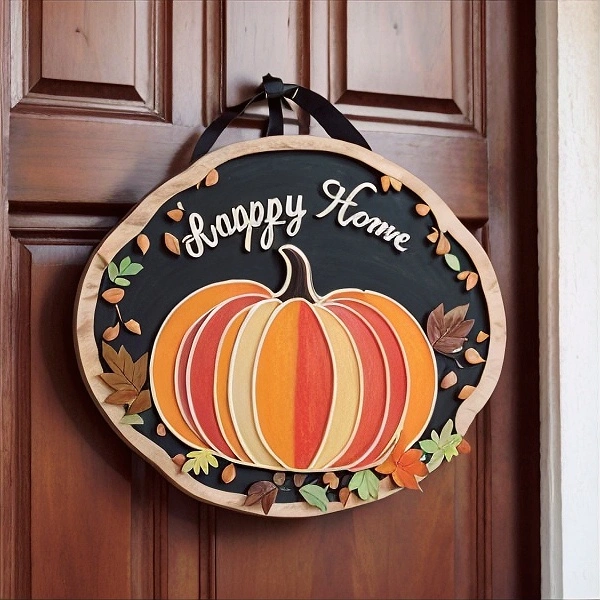Creating a playroom in a small space can be a rewarding challenge for parents and caregivers. A well-designed play area can offer children a dedicated space for creativity, fun, and learning, even in the most compact environments. By utilizing clever design strategies and smart storage solutions, you can transform a small room into an imaginative playground that keeps clutter at bay.
This article presents 12 innovative playroom ideas tailored specifically for small spaces, focusing on maximizing every square foot while ensuring that the area remains visually appealing and functional. From clever furniture choices to vibrant decor, these ideas will help you craft a playful environment that fosters exploration and enjoyment.
1. Multi-Functional Furniture
In small spaces, choosing furniture that serves multiple purposes is essential. Look for items like storage ottomans, convertible tables, or a daybed that can double as a seating area and a sleeping space. These versatile pieces not only save room but also keep the play area organized and neat.
When selecting multi-functional furniture, consider the activities your children enjoy most. For example, a table with built-in storage drawers can hold art supplies while also providing a space for crafts and games.
2. Wall-Mounted Storage
Maximize vertical space by incorporating wall-mounted storage solutions. Shelves, pegboards, and wall bins are perfect for keeping toys and books off the floor while allowing easy access for kids. This also helps create a clean and tidy look in your playroom.
Choose colorful or fun designs to enhance the playful atmosphere. By displaying some toys on shelves, you also add visual interest to the room, making it more inviting and engaging for children.
3. Foldable Play Mats
Foldable play mats are a fantastic addition to a small playroom, providing a designated area for play that can be easily stored when not in use. These mats come in various colors and designs, making them functional and fun.
When playtime is over, simply fold the mat and tuck it away in a closet or under the bed. This not only frees up space but also encourages children to help with clean-up by making it easy to stow their play area.
4. Creative Zones
Divide the small space into distinct creative zones to foster different types of play. For instance, create an art corner, a reading nook, and a building block area. Use rugs or furniture placement to define each zone without permanent partitions.
This approach allows children to choose activities based on their interests while keeping everything organized. Each zone encourages exploration and creativity within the limited space.
5. Customized Furniture
Custom furniture can be a game-changer in small playrooms. Consider having built-in shelves or benches designed to fit the room’s specific dimensions, ensuring that every inch is utilized effectively. Customized pieces can reflect your children’s personalities and interests as well.
Hiring a carpenter or opting for modular furniture can help you achieve a unique look that caters to your space, providing a tailored solution that feels both functional and playful.
6. Disguised Storage
Incorporate storage solutions that double as decorative items. Benches with hidden compartments, decorative baskets, and stylish trunks can store toys, art supplies, and games while also contributing to the room’s aesthetic appeal.
Choose storage options that blend with the decor, ensuring that your playroom looks organized and chic rather than cluttered. This way, children can access their toys easily while maintaining a cohesive look in the space.
7. Bright Colors and Themes
Leverage colorful paint and playful themes to energize a small playroom. Bright colors can make the space feel larger and more cheerful, creating an inviting atmosphere for imaginative play. Consider using a fun theme, like a jungle safari or underwater adventure, to inspire creativity.
Use wall decals, colorful rugs, and themed accessories to bring the theme to life. This approach fosters an environment that’s fun and encourages children to engage in imaginative play.
8. Low-Level Shelving
Installing low-level shelving gives children easy access to their favorite toys and books, promoting independence and organization. Additionally, this design choice helps you utilize wall space without overpowering the room.
Place less frequently used items on higher shelves, while ensuring that the toys they interact with most are at their level. This encourages responsibility and keeps play areas tidy, as children can put things away themselves.
9. Slide-Out Drawers
Slide-out drawers under beds or benches are an efficient use of space in a small playroom. These drawers can store a variety of items, from puzzles and board games to plush toys, keeping everything organized and out of sight.
Ensure that the drawers are easy for kids to access, promoting self-sufficiency and helping them take part in cleaning up after playtime. This organization method can keep the playroom clutter-free while maximizing available space.
10. Cozy Reading Nook
Creating a cozy reading nook can be a delightful addition to a small playroom. Utilize corner spaces with comfortable seating like bean bags or floor cushions, and add a small bookshelf filled with favorite books.
A dedicated space for reading encourages children to develop a love for literature and provides a quiet retreat for downtime, balancing active play with calm-focused activities.
11. Interactive Wall Art
Incorporate interactive wall art to keep kids engaged and inspired. Consider chalkboard walls, magnetic paint, or peel-and-stick wall decals that they can change at their leisure. These creative elements invite hands-on engagement without taking up floor space.
Such artistic features can also evolve with your child’s interests, ensuring that the playroom remains a dynamic space for creativity and exploration as they grow.
12. Portable Play Stations
Portable play stations are a great way to use a small space efficiently. Consider adding a rolling cart with art supplies, craft materials, or game essentials that can be easily moved around the room as needed.
This flexibility allows for spontaneous play while keeping things organized. When playtime is over, simply roll the cart out of sight, making the playroom look spacious and tidy.
Conclusion
In conclusion, designing a playroom in a small space requires creativity and strategic planning. By incorporating multifunctional furniture, colorful decor, and smart storage solutions, you can create an engaging and organized environment for children to play and learn.
With these 12 playroom ideas, you can turn even the tiniest spaces into a delightful sanctuary for creativity and joy. Remember, a well-thought-out space not only enhances playtime but also supports the development and happiness of your little ones.
Frequently Asked Questions
How can I make a small playroom look bigger?
Use light colors, incorporate mirrors, and keep furniture low to the ground to create an illusion of more space.
What are some simple storage solutions for a playroom?
Use baskets, bins, and shelving units to store toys and games, making them easily accessible while keeping the area tidy.
How can I create a safe play environment in a small space?
Ensure that furniture is anchored securely, use soft flooring, and choose age-appropriate toys to minimize hazards.
What types of activities can I encourage in a small playroom?
Encourage a mix of creative, educational, and active play activities, such as art projects, storytelling, and imaginative games.
How can I involve my kids in organizing their playroom?
Include your children in the organization process by letting them choose storage solutions and deciding where their toys should go to foster ownership and responsibility.

